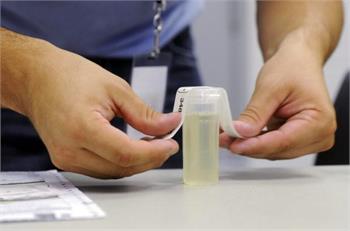 |
The colour of pee and what it says about your health
 |
TORONTO – It’s something we all get rid of several times a day – and sometimes in the middle of the night – but it’s not exactly a topic of everyday or, let’s face it, polite conversation.
Still, urine, pee – call it what you will – can tell a lot about a person’s health, especially when it comes to colour.
Urine is comprised of waste products and excess fluid that are filtered from the blood by the kidneys. When healthy, these twin fist-sized organs filter up to about 150 litres of blood each day, producing one to two litres of urine that is passed through the tube-like ureters to the bladder for elimination through the urethra.
How much urine an individual produces depends on many factors, including the amount of liquids and types of foods ingested and how much fluid is lost through perspiration and respiration.
Ever wonder why urine can look amber-coloured in the morning, but range from straw to sunshine yellow at different times throughout the day?
It’s all to do with the amount of water and other liquids a person consumes at any given time, says urologist Dr. Daniel Shoskes of the Cleveland Clinic, which has created an online chart entitled “The Colour of Pee.”
“People may wonder why their urine is a little dark or a little lighter,” says Shoskes, who served as a consultant on the project.
“What the chart sort of helps with is first of all with all the variations of yellow, from very pale to very dark,” he says. “It’s a measure of hydration. So certainly the more you drink, the closer to water it’s going to look like.”
Indeed, if the urine is colourless, doctors at the Cleveland Clinic who created the chart suggest the person is drinking a lot of water and “may want to cut back.”
Pee that’s reminiscent of pale straw or a transparent yellow is considered normal. A slightly darker sunshine yellow is also in the normal range, but the chart recommends drinking some water “soon.”
Seeing amber- or honey-coloured urine is an indication the body isn’t getting adequate water. “Drink some now,” the chart recommends.
Urine can be darker in the morning because it’s more concentrated, says the American.-born Shoskes, who grew up in Toronto and did his medical training at the University of Toronto, followed by a research fellowship at the University of Alberta.
“That’s natural. If you sleep for eight hours, you’re not drinking for eight hours, then you’re going to be relatively dehydrated when you wake up … If you’re very dehydrated, healthy kidneys are very good at being able to conserve water and concentrate urine, so it gets a lot darker.
“And I think the chart shows that that’s pretty much a normal thing.”
What isn’t normal is urine that passes out of the yellow end of the spectrum into various other colours of the rainbow.
Urine that looks like a bottle of dark ale or syrup could indicate severe dehydration or liver disease. If drinking lots of water fails to eliminate the brownish hue and the colour persists, a visit to the doctor is called for.
Pink to reddish urine should raise a red flag – or at least start one wondering what’s been recently ingested that might account for that blush of colour.
“When unusual colours come out, fortunately sometimes it’s just in response to certain foods and everyone reacts differently,” says Shoskes, a surgeon who specializes in kidney transplants. “I know if I eat fresh beets, I’m going to have red urine that day. That’s me, but that’s not other people.”
Blueberries, blackberries and rhubarb can also leave a crimson tint in some people’s urine, as can dyes used in some foods and certain medications.
For instance, the antibiotic rifampin, often used to treat tuberculosis, can turn urine red. Other medications – among them the antidepressant amitriptyline and the anti-inflammatory painkiller indomethacin can cause blue urine.
“We tend to try to warn patients about this because it’s alarming if they don’t expect it,” Shoskes says.
Medication is not always the culprit: a rare genetic disease called familial hypercalcemia can also turn urine blue; a urinary tract infection caused by a certain bacteria can produce green pee.
However, seeing pink or red in the toilet bowl can be a sign there’s blood in the urine, says Shoskes, explaining that there are a long list of conditions which can cause that to occur, some of which “are quite insignificant and benign and some of which are very serious.
“Blood needs to be taken very seriously,” he cautions. “Most of the urinary cancers, including kidney, ureter, bladder and prostate can all present with blood in the urine.”
Examining the state of a patient’s urine remains an important screening test for doctors in determining what may be going on in the body. Besides looking for traces of blood that could flag a tumour, large amounts of protein can indicate the first signs of kidney disease or stones.
Elevated white blood cells and nitrates are typical signs of infection in the urinary tract, says Shoskes.
The lowly urine has been used since the earliest days of medicine – Hippocrates reportedly routinely smelled and even tasted patients’ urine – as a diagnostic tool, and to this day it can tell doctors much about a person’s health.
The colour of pee can act as an initial screening test to decide “what is just a part of normal life and hydration and what might be worrisome and should trigger a discussion with your doctor,” who may follow up with urinalysis and imaging tests, says Shoskes.
“It still has a very important role in the screening and care of patients.”
The Canadian Press
1143 page views
|
|
|
|